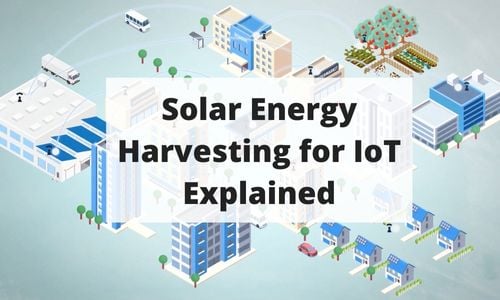
Batteries are required for nearly every electronic device, it seems.
They allow for simple operation and quick deployment.
What happens when those batteries die?
Take this blog post with you!
The short video below focuses on why energy harvesting and PowerFilm PV are an excellent fit for IoT devices and applications.
It discusses the shortcomings of batteries, energy harvesting solutions, well-suited devices and applications, and how to get started with PowerFilm solar modules.
Battery Problems
All electronics need a power source to operate. This power generally comes in the form of a battery or wired power, each with its own set of limitations and issues.
Too often, device battery lifetime is measured in months rather than years. Battery life, limited power, and battery bulk are significant limitations holding back many IoT applications and larger-scale deployments.
Dead batteries must be recharged or replaced, placing a significant maintenance burden on end-users.
Large bulky batteries are not viable for compact wearables and other devices that are space-constrained.
For many applications, energy harvesting can solve these issues.
Energy Harvesting Solution
Light energy, whether indoors or outdoors, can be used to supplement power to a device extending battery life indefinitely, reducing the required size, or eliminating the battery altogether.
With an increased power budget, devices can do more without fear of reducing battery life. Devices also gain power resilience from unexpected events or behavior, such as unforeseen firmware updates.
PowerFilm’s thin, lightweight, flexible PV enables innovative compact designs not possible with traditional battery solutions.
Well-suited Applications
Any battery-operated device is potentially a great fit for solar energy harvesting.
Many of the devices used in IoT are extremely low power. Even in dim environments, like warehouses and industrial plants, enough light energy is available to run basic electronics.
Devices that use BLE, LoRa, NB-IOT, LTE-M, ZIGBEE, ZWAVE, active RFID, GPS, and other low power protocols can benefit from energy harvesting with a PV cell.
These devices include smart locks, Electronic Shelf Labels (ESLs), asset trackers, environment sensors, health monitors, wearables, beacons, and building sensors.
As you can see, many different types of devices can benefit from energy harvesting. The best way to get started is to take advantage of PowerFilm’s portfolio of standard designs and development tools.
PowerFilm Products
PowerFilm offers dozens of standard designs in a range of different sizes, voltages, and configurations. Using a standard design expedites your project and makes the transition from prototyping to production seamless.
Input your solar module requirements into our custom design tool to help determine if a standard product will work for you. If you need something custom, we do that too!
Our energy harvesting development kits are a great way to quickly prototype an energy harvesting system. With the PMIC circuitry, a small battery, and our PV cells, they come with everything you need to get up and running.
If you have questions about energy harvesting or a device that may benefit from an integrated PV cell, please don’t hesitate to contact us.
We look forward to working together to find the ideal power solution for your application.
Take this blog post with you!